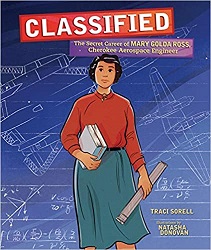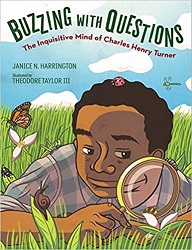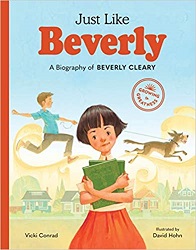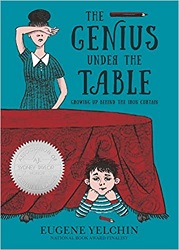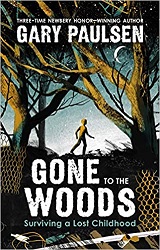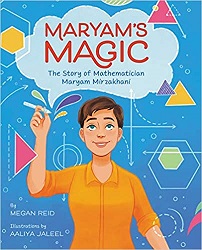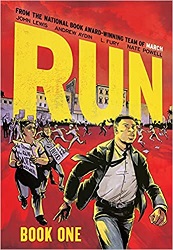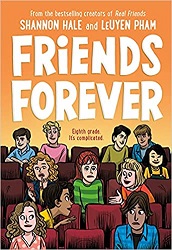Review of Classified, by Traci Sorell, illustrations by Natasha Donovan
The Secret Career of Mary Golda Ross, Cherokee Aerospace Engineer
by Traci Sorell
illustrations by Natasha Donovan
Millbrook Press, 2021. 32 pages.
Review written January 5, 2022, from a library book
Starred Review
2022 Mathical Book Prize Honor Book, Grades 3-5
2022 American Indian Youth Literature Award Honor Book, Picture Books
I’m so happy about a recent burst of picture book biographies of distinguished women mathematicians and engineers! They would have inspired me as a child, and they inspire me as an adult.
This book tells the story of Mary Golda Ross, a member of the Cherokee nation, who excelled in math, even though she was surrounded by boys in her classes. The book portrays her as always learning. She became a teacher after graduating from college, but during World War II got a job working on fighter jets for Lockheed Aircraft Corporation. That job led her to take engineering classes at a local university to become Lockheed’s first female engineer. After the war, she worked in a classified group developing space travel and satellites.
I like the way Cherokee values are introduced at the beginning and throughout the text we’re told how she demonstrated them: “gaining skills in all areas of life, working cooperatively with others, remaining humble when others recognize your talents, and helping ensure equal education and opportunity for all.”
A whole spread at the end is devoted to Mary’s work helping others not have to face the barriers she did:
Although her work was classified, Mary still had much to share. She never stopped recruiting American Indians and young women to study math and science and helping support them to become engineers.
Mary’s work and her legacy of service have helped many others become trailblazers, too.
I learned in the timeline at the back that she helped found the Los Angeles section of the Society of Women Engineers and later a scholarship was established in her name.
A lovely book about a remarkable woman I’m glad to now know about.
tracisorell.com
natashadonovan.com
Find this review on Sonderbooks at: www.sonderbooks.com/Childrens_Nonfiction/classified.html
Disclosure: I am an Amazon Affiliate, and will earn a small percentage if you order a book on Amazon after clicking through from my site.
Disclaimer: I am a professional librarian, but the views expressed are solely my own, and in no way represent the official views of my employer or of any committee or group of which I am part.
What did you think of this book?
